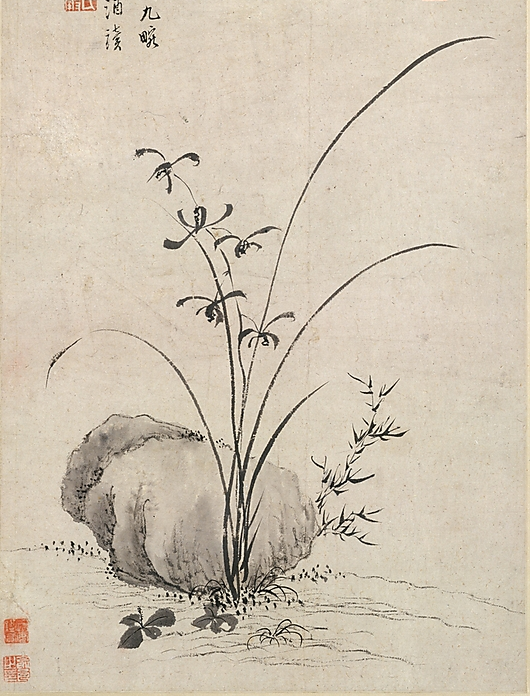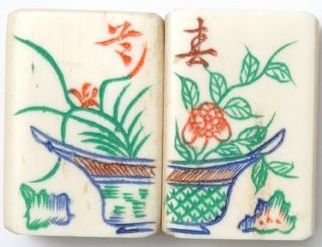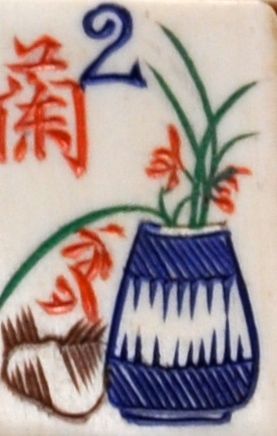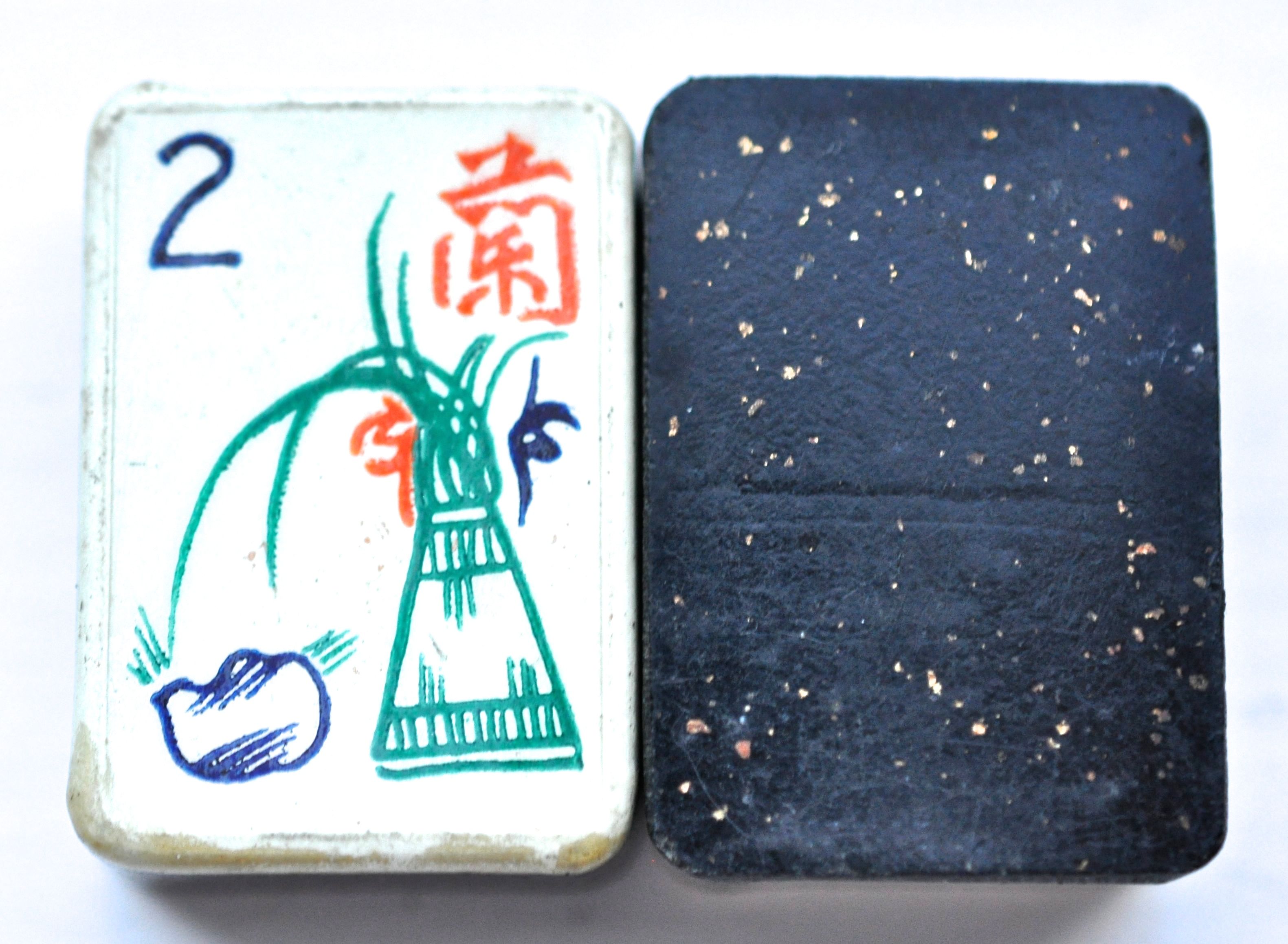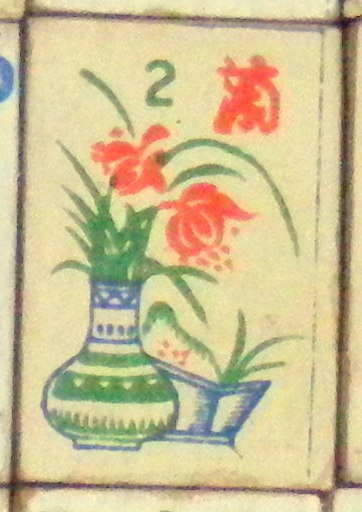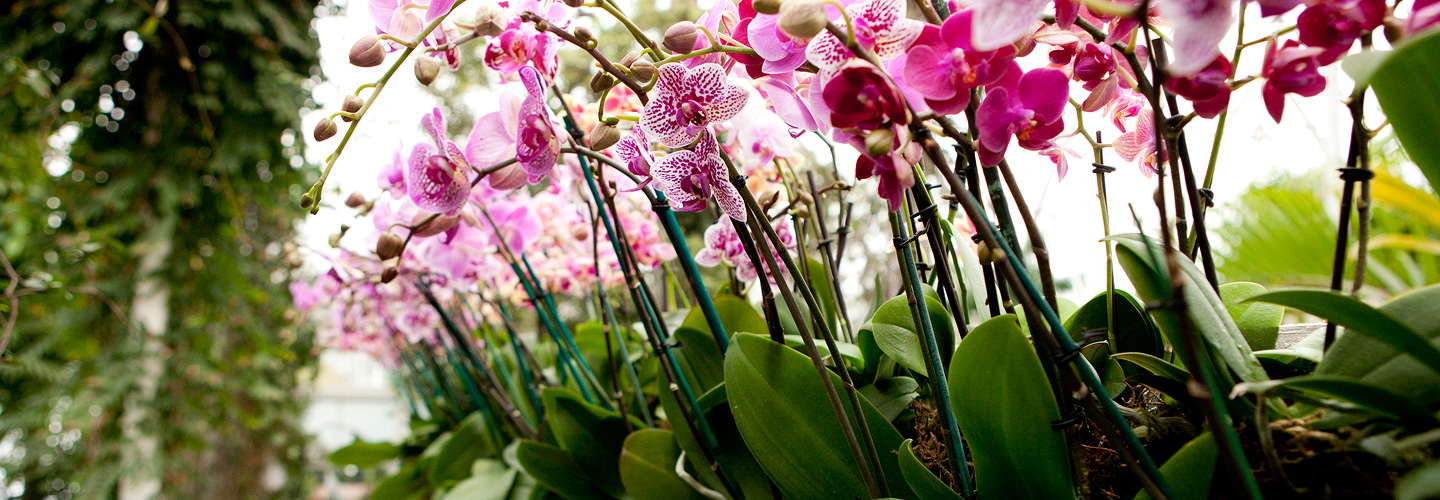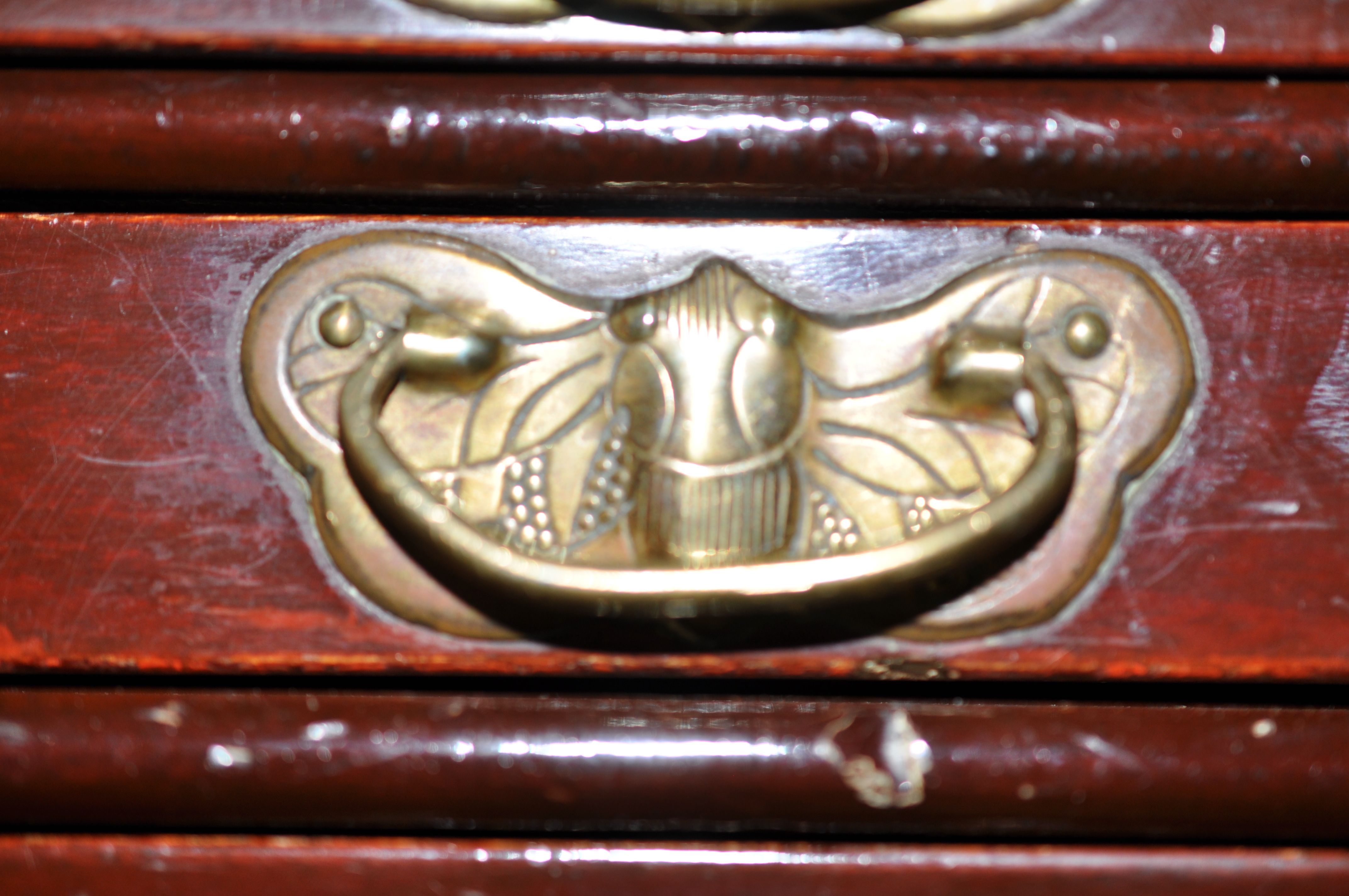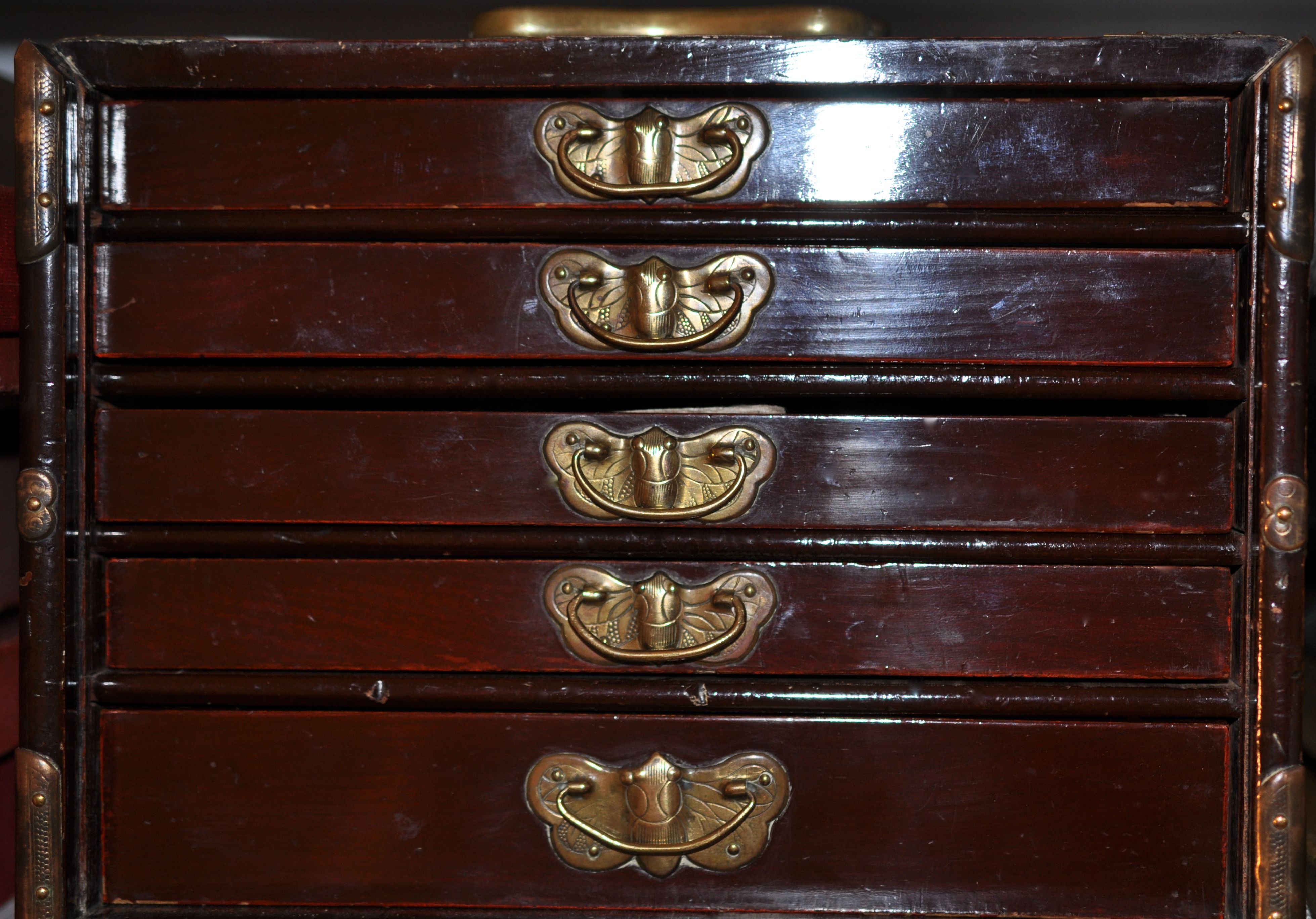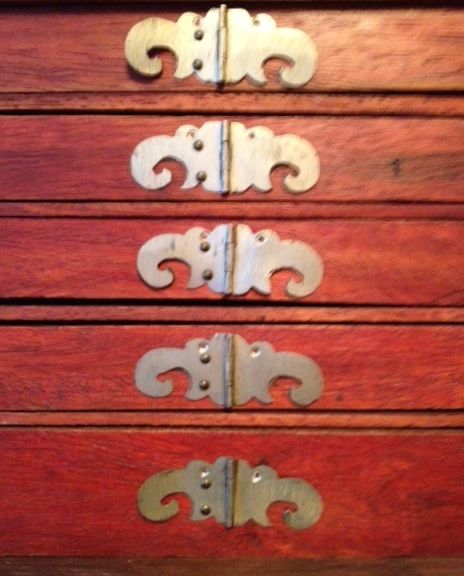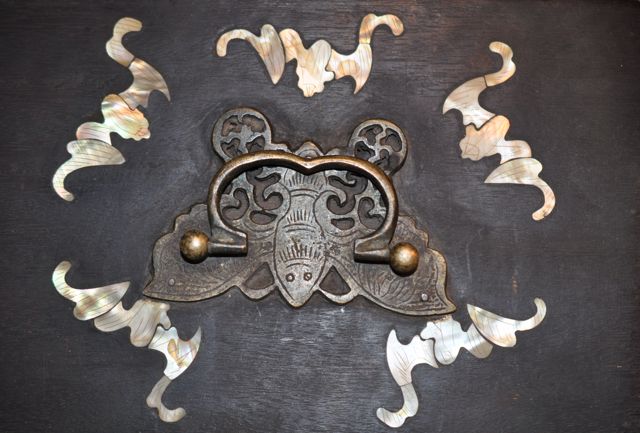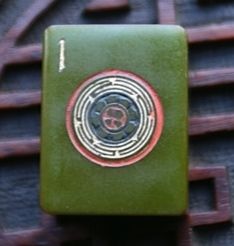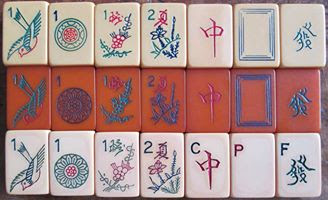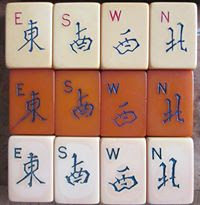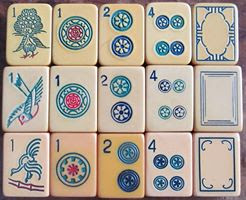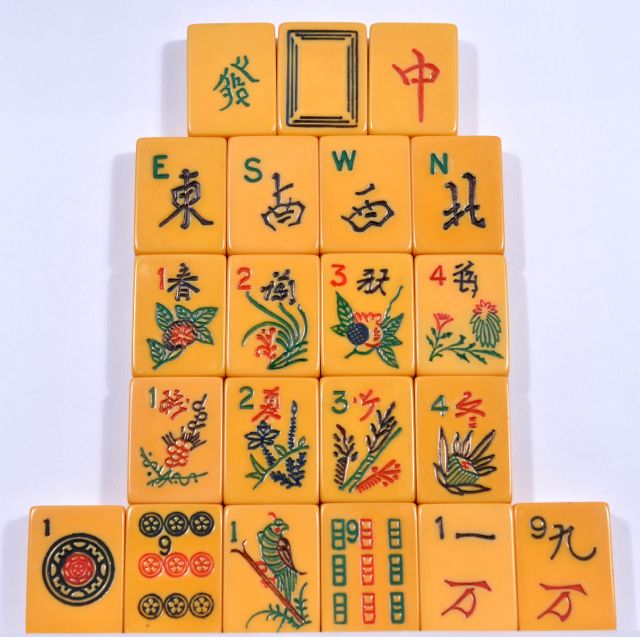This detail is of a sutra cover in the collection of the Metropolitan Museum of Art. Dating from the Ming Dynasty, it shows flowers, the round shapes, and lingzhi, the one toward the lower right.
As many of you know, lingzhi is a fungus, considered to be the Plant of Immortality. (C.A. S. Williams) It is so revered by the Chinese that often it was preserved and stored in temples, or copies of it might be made and placed there.
The heads of scepters were based on lingzhi. These scepters are called ruyi.

You can see how the head of the scepter has a very organic look to it. The ruyi became associated with power, and good luck and blessings. (Wiki) Ruyi appears in Mahjong too, on tiles and on boxes. Often it is hard to see because it is so stylized, but if you look hard enough, you can see it.
Ruyi can come in the shape of clouds:
On this side of a Mahjong box we looked at before, we see this magnificent dragon. His leonine head is in the center of the design, and his body surrounds it. But what is in the background? Ruyi shaped clouds! Those clouds take up most of the space around him.
On the back of this same box you can see the dragon, once again surrounded by clouds shaped like ruyi! ( I still love that fish involved with his inhale or exhale. Perhaps fish and dragons can be another post some day!)
These are two sets of Flowers from a Chinese Bakelite set that has 16 Flowers. Above we see above some gods on ruyi shaped clouds.
We also have some gods here. The two men in the middle are the He-Hes, the heavenly twins. The two tiles at either end of the row also have a bit of extra meaning. The one on the right is the magic bowl, often seen containing the lotus (left) and the herb of immortality, which here is represented by the clouds! The bowl, lotus and lingzhi mean "concord as your hear desires" according to Wolfram Eberhard. The He Hes are associated with marital harmony, so these Flowers bode well for happiness within the home.
(After writing this, I used the app Pleco, available for ipad, and got the translation which worked with the visual interpretations of the bottom tiles, from left to right: harmony, combine, two, celestials!)
A book by this author and Ann Israel is entitled Mah Jongg The Art of the Game.
You can read reviews on the book's website and find author appearances:
www.mahjonggtheartofthegame.com
You can order it by clicking here
http://www.barnesandnoble.com/w/mah-jongg-ann-israel/1118759459?ean=9784805313237
or here






